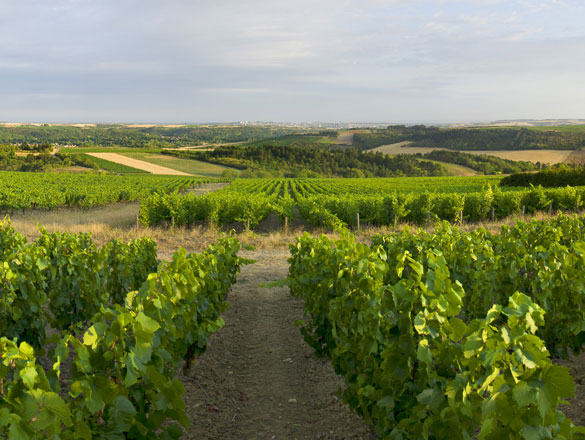

The vineyards of Bourgogne produce some great wines with a historical and international reputation. However, the region is not simply limited to its iconic appellations. In addition to its Village Premier Cru and Grand Cru AOCs, it also produces a range of wonderful Régionale and Village appellations to explore.
You will also find a full list of the Bourgogne’s Climats and lieux-dits on this page.
Check out the complete list of the 84 Bourgogne appellations.
However, your exploration has only just begun. Bourgogne wines have never before offered such high quality. Besides our range of internationally celebrated wines, try some of our lesser-known appellations where there are lots of surprises in store.
And for a fun way to find out more about the wines on offer, try out our “Which Bourgogne wine is right for me?” quiz, or check out Bourgogne Maps to take an interactive tour of the region.
Regionale Appellation ; Dénomination Géographique Complémentaire
VIGNOBLES DE CHABLIS ET DU GRAND AUXERROIS
31 juillet 1937
Reds and rosés - Pinot Noir.
Whites - Chardonnay.
Area under production*:
1 hectare (ha) = 10,000 m² = 24 ouvrées.
Reds and rosés: 139.93 ha
Whites: 129.68 ha
Average annual yield**:
1 hectolitre (hl) = 100 litres = 133 bottles.
Reds and rosés: 5,023 hl
Whites: 4,757 hl
*In 2022 **5-year average, 2017-2021
The Bourgogne Côtes d’Auxerre Régionale appellation covers still red, white, and rosé wines produced in an area covering five villages that was defined in 1990.

The reds are bright cherry red in color, with hints of ruby. The nose brings notes of cassis, cherry, blackberry, toast, licorice, wild strawberry, raspberry, sloe, rose, and pepper. In the mouth, the attack is smooth and fresh with fleshy fruit and silky tannins. The finish is forthright, with salinity and aromas of cherry, licorice, and spice.
The whites are pale yellow with a satin look, and hints of green or straw yellow, evolving to gold over time. The nose reveals saline notes with lemon, white peaches, apple, almond, mint, fennel, and licorice, sometimes topped off with honeysuckle, fresh almond, and hazelnut. The nose is forthright with lemony freshness rounded out by a fleshy fruitiness evoking peach and other yellow-fleshed fruit. The finish is light and tender, with salinity and sometimes giving way to a spicier register.

Red: Its fruity freshness works very well with jambon persillé, fuseau lorrain, salad with bacon, sea bass with veal jus, or duckling with cabbage. Its sophisticated tannins and touch of spice on the finish go well with coq au vin, rabbit with mustard, calves’ liver, roast chicken, chicken and vegetable pastillas, grilled tuna steak, Tomme or aged Mimolette cheese.
Serving temperature: 15-16°C.
White: Its forthrightness and fruity aromas call for light dishes with a melting texture to be enjoyed as an aperitif, with savory tapas, sashimi and sushi, avocado and shrimp salad, leek tart, fish roasted with fresh herbs or topped with mashed potato, sorrel omelet, or cream of asparagus soup with a touch of whipped lemon cream. In terms of cheeses, try it with cream cheese with herbs, or other light, creamy cheeses.
Serving temperature: 11-13°C.

These vines grow to the south of Auxerre, mainly on the right bank of the Yonne river. From the end of the 14th century until the arrival of the railways, the waterways were the best route for dispatching wine to Paris. In 1321, Auxerre wines were served at the coronation of Charles VI. In October 1512, three winegrowers from Auxerre took 100 casks to the fair in Meaux. Louis XI was also a fan of the region’s wines, as was Louis XIV, who took them to counter his indigestion. In 1787, the vines of Auxerre were estimated to cover 1,827 hectares. The re-establishment of the vines post-phylloxera, and selection of the very best terroirs, resulted in the current area under vine of just over 200 hectares.

The vines of Bourgogne Côtes d’Auxerre grow at between 120-280m above sea level, on the slopes and edges the Yonne or in secondary valleys.They mainly face south, with some variation from southeast to southwest. The soil is made up of limestone, clay, and marl-clay formations from the Upper Jurassic (Kimmeridgean and Portlandian) and from the Lower Cretaceous (Hauterivian).
